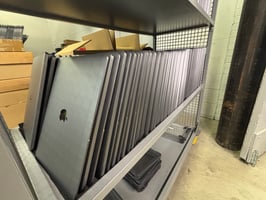If you've been in IT management for any length of time, you know the budget squeeze: new device...

ITAD (IT Asset Disposition) is the process of securely and responsibly managing the end-of-life cycle of IT equipment. It involves services such as data destruction, electronics recycling, asset remarketing, and environmentally compliant disposal of outdated or unwanted technology. Organizations use ITAD to protect sensitive data, comply with regulations, recover value from retired assets, and reduce environmental impact. A trusted ITAD provider ensures secure chain-of-custody, certified data wiping or shredding, and proper reporting for audit and compliance purposes.
ITAM (IT Asset Management) is the process of tracking, managing, and optimizing an organization’s IT assets throughout their lifecycle. It involves maintaining an accurate inventory of hardware, software, and digital assets, ensuring compliance with licensing agreements, managing asset performance, and planning for upgrades or disposition. Effective ITAM helps organizations control costs, reduce risk, improve security, and maximize the value derived from their technology investments.
ITAM and ITAD are related but distinct processes in managing technology assets.
ITAM focuses on tracking, managing, and optimizing IT assets- hardware, software, and digital resources- throughout their operational lifecycle, from acquisition to active use.
ITAD focuses on the secure and responsible handling of IT assets at end-of-life, including data destruction, equipment recycling, asset remarketing, and compliant disposal.
Together, ITAM ensures assets are used effectively and efficiently, while ITAD ensures they are retired securely and sustainably.
R2v3 certification is the latest version of the Responsible Recycling (R2) Standard for electronics recycling and reuse. It ensures that certified facilities follow strict environmental, health, safety, and data security practices when handling used electronics.
R2v3-certified companies are audited for responsible downstream recycling, safe management of hazardous materials, secure data destruction, and transparent chain-of-custody. This certification helps businesses meet compliance requirements and ensure their retired IT assets are processed ethically and sustainably.
Learn more about Synetic's certifications here.
The NAID AAA Certification is a globally recognized standard for secure data destruction. Issued by i-SIGMA’s National Association for Information Destruction (NAID), this certification verifies that a company’s data destruction processes—including shredding, wiping, and physical destruction—meet strict security, operational, and regulatory standards.
Certified companies undergo regular, unannounced audits to ensure ongoing compliance with industry best practices and data protection laws. NAID AAA Certification helps organizations ensure that sensitive data on hard drives, storage media, and paper records is destroyed securely and in accordance with legal and privacy requirements.
There is a distinction between being certified and “adhering” to the standards. Companies with the actual certification go through the detailed audit process and clearly display the certification logo.
Learn more about Synetic's certifications here.
A Certificate of Destruction (CoD) is an official document that confirms that materials—such as sensitive data, documents, electronic media, or physical products—have been securely and permanently destroyed. This certificate provides proof that the destruction process met required security, legal, and compliance standards.
Learn more here.
Data sanitization is the process of permanently and irreversibly removing or destroying data from storage devices—such as hard drives, SSDs, and servers—so that no residual data can be recovered. Unlike simple deletion, proper data sanitization uses methods like data wiping, cryptographic erasure, or physical destruction to ensure compliance with data privacy regulations (such as GDPR, HIPAA, or PCI DSS) and to protect against data breaches. It is an essential step when decommissioning, recycling, or repurposing IT equipment.
Degaussing is the process of permanently erasing data from magnetic storage devices—such as hard drives, tapes, and floppy disks—by applying a powerful magnetic field. This field disrupts the magnetic domains that store data, rendering the device unreadable and the data unrecoverable. Degaussing is a fast, effective method for secure data destruction and helps organizations comply with data privacy regulations like GDPR, HIPAA, and NIST guidelines when retiring or disposing of magnetic media.
The best process for data center decommissioning involves a secure, well-documented, and compliant approach to safely retire IT assets and infrastructure. Key steps include planning and risk assessment, inventorying all hardware and data, performing secure data destruction (via data wiping, degaussing, or physical destruction), removing and recycling or reselling equipment through an IT asset disposition (ITAD) program, and verifying compliance with data privacy regulations like GDPR, HIPAA, and NIST. Partnering with a certified data center decommissioning service provider ensures the process is efficient, secure, and environmentally responsible.
White Glove Deployment is a premium, fully managed service that handles every aspect of deploying new IT equipment—such as laptops, servers, or network devices—with a focus on seamless setup, configuration, and end-user readiness. This process typically includes device imaging, custom configuration, software installation, data migration, asset tagging, and on-site delivery and installation. White Glove Deployment ensures devices are ready to use out of the box, minimizes downtime, enhances end-user experience, and supports enterprise IT rollouts with secure and compliant processes.
Yes, you can generate value from old IT assets through a process called IT asset disposition (ITAD). By securely decommissioning, refurbishing, and remarketing equipment such as servers, laptops, storage devices, and networking gear, organizations can recover residual value, reduce e-waste, and support sustainability goals. A certified ITAD provider ensures secure data destruction, maximizes resale opportunities, and helps businesses comply with regulations like GDPR, HIPAA, and NIST, turning outdated IT hardware into financial return while protecting sensitive data.
Lorem ipsum dolor sit amet, consectetur adipiscing elit.